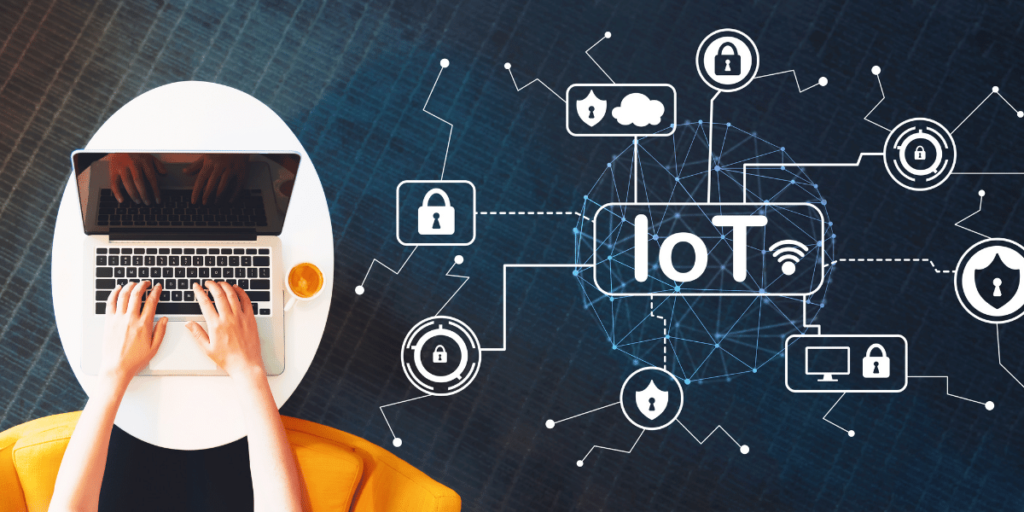Connecting the Dots: Exploring the Transformative Power of the Internet of Things (IoT)”
In an era characterized by the interconnectivity of devices and the digitization of daily life, the Internet of Things (IoT) has emerged as a revolutionary force, reshaping industries, enhancing efficiency, and propelling us into a new era of innovation. This article delves into the multifaceted world of IoT, exploring its fundamental concepts, applications across diverse sectors, potential benefits, challenges, and the trajectory it charts for our increasingly interconnected future.
I. Introduction
A. Defining the Internet of Things
The Internet of Things refers to the network of interconnected devices embedded with sensors, software, and other technologies, enabling them to collect and exchange data. These devices range from everyday objects like household appliances to complex industrial machinery, collectively forming a web of connectivity that transcends traditional boundaries.
B. The Evolution of IoT
The journey of IoT began with the concept of a “smart” world, where devices communicate intelligently to streamline processes and enhance user experiences. Over time, the integration of sensors, connectivity, and cloud computing has fueled the exponential growth of IoT applications.
II. Foundations of IoT
A. Key Components
- Sensors and Actuators:
- The role of sensors in collecting real-world data.
- Actuators as devices that execute actions based on the data received.
- Connectivity:
- Various communication protocols facilitate data transfer.
- The significance of reliable and secure connectivity in IoT.
- Data Processing and Analytics:
- Cloud computing is the backbone for data storage and processing.
- The importance of analytics in deriving meaningful insights from vast datasets.
III. Applications Across Industries
A. Smart Cities
- Urban Planning:
- IoT’s role in optimizing traffic flow and parking.
- Enhancing public transportation systems for efficiency.
- Energy Management:
- Implementing smart grids for optimized energy distribution.
- IoT-driven solutions for monitoring and reducing energy consumption.
B. Healthcare
- Remote Patient Monitoring:
- Wearable devices and IoT for continuous health tracking.
- Improving patient outcomes through real-time data analysis.
- Asset Tracking in Hospitals:
- Utilizing IoT to monitor the location and status of medical equipment.
- Enhancing operational efficiency and reducing costs.
C. Manufacturing and Industry 4.0
- Predictive Maintenance:
- IoT-enabled sensors predict equipment failures before they occur.
- Reducing downtime and extending the lifespan of machinery.
- Supply Chain Optimization:
- Tracking goods in real-time throughout the supply chain.
- Enhancing transparency, reducing errors, and minimizing losses.
D. Agriculture
- Precision Farming:
- IoT sensors for monitoring soil conditions and crop health.
- Optimizing resource use and improving crop yields.
- Livestock Monitoring:
- Wearable devices and sensors for tracking the health and location of livestock.
- Enhancing overall farm management and productivity.
IV. Benefits of IoT Implementation
A. Operational Efficiency
- Automated Processes:
- Streamlining routine tasks through automation.
- Improving overall efficiency and reducing human intervention.
- Real-time Data Insights:
- Access to instant, actionable data for informed decision-making.
- Enhancing agility and responsiveness in various sectors.
B. Improved Quality of Life
- Smart Homes:
- IoT-enabled devices for home automation and security.
- Customizing living spaces for comfort and convenience.
- Health and Wellness:
- Wearable devices promote a proactive approach to personal health.
- Encouraging healthier lifestyles and preventive care.

C. Cost Savings and Resource Optimization
- Energy Efficiency:
- Smart grids and devices optimizing energy consumption.
- Reducing costs and environmental impact.
- Supply Chain Optimization:
- Minimizing waste through real-time monitoring and efficient logistics.
- Enhancing sustainability practices.
V. Challenges and Considerations
A. Security and Privacy
- Data Security Concerns:
- Addressing vulnerabilities in IoT devices.
- Implementing robust cybersecurity measures.
- Privacy Issues:
- Balancing the convenience of IoT with user privacy.
- The ethical implications of ubiquitous data collection.
B. Interoperability
- Standards and Protocols:
- The need for universal standards in IoT.
- Ensuring seamless communication between diverse devices.
- Integration Challenges:
- Overcoming obstacles when integrating legacy systems with IoT.
- The importance of a cohesive and compatible IoT ecosystem.
VI. The Future of IoT
A. Emerging Technologies
- Edge Computing:
- Shifting data processing closer to the source for faster response times.
- Addressing latency issues in IoT applications.
- 5G Technology:
- The impact of 5G on IoT connectivity and speed.
- Enabling more widespread adoption of IoT applications.
B. Artificial Intelligence and IoT Integration
- Machine Learning in IoT:
- Enhancing predictive capabilities and decision-making.
- Creating intelligent and adaptive IoT systems.
- Autonomous Systems:
- The synergy between AI-driven autonomy and IoT connectivity.
- Applications in self-driving vehicles and smart infrastructure.
VII. Conclusion
A. Reflecting on the IoT Journey
- From Concept to Reality:
- Tracing the evolution of IoT from its conceptualization to widespread implementation.
- The societal and industrial impact of IoT on a global scale.
- Challenges as Catalysts for Innovation:
- How overcoming challenges in security and interoperability has spurred innovation.
- The resilience of IoT in the face of evolving technological landscapes.
B. Looking Ahead to an Interconnected Future
- The Continued Expansion of IoT:
- Anticipating further integration into daily life and industries.
- The role of IoT in shaping smart, sustainable, and interconnected communities.
- Balancing Technological Advancement with Ethical Considerations:
- Emphasizing the importance of responsible and ethical IoT development.
- Striking a balance between innovation and societal well-being in the IoT era.
The Internet of Things has transcended its status as a technological trend to become a foundational force shaping the way we live, work, and interact with the world. As IoT continues to evolve, its potential to drive innovation, enhance efficiency, and improve the quality of life is boundless. By navigating the challenges and embracing the opportunities that IoT presents, we pave the way for a future where connectivity is not just a convenience but a transformative and indispensable aspect of our global landscape.